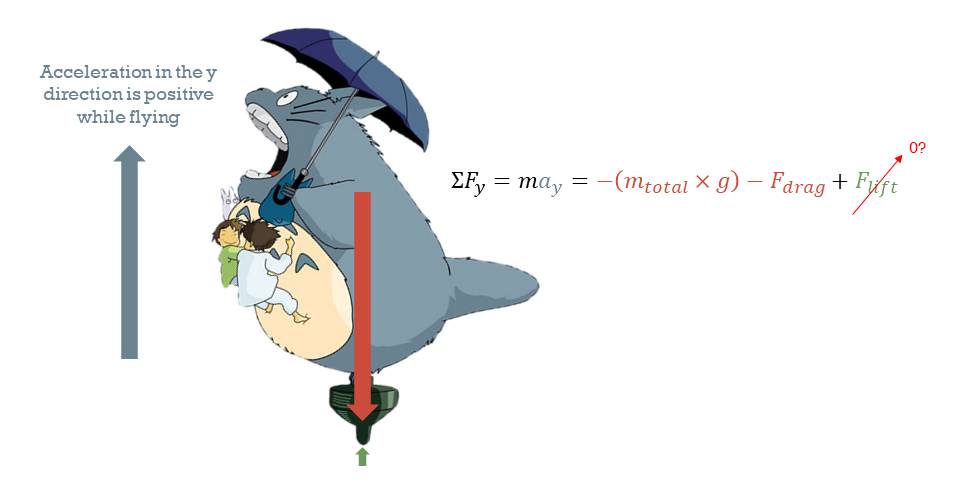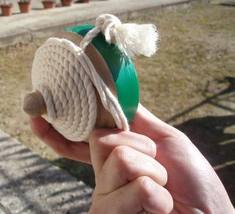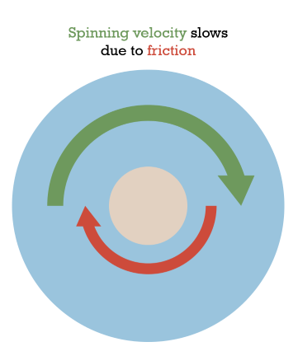Studio Ghibli Physics: The Importance of F = ma

| Home |
Miyazaki |
Ponyo
Physics |
The
Importance of F = ma |
Sources |
Studio Ghibli movies are fictional and not meant to be true to life. However, in the context of the film, impossible things often seem perfectly normal. The film maker creates immersive realism by adding familiar qualities to the possibly outlandish setting or background characters. This part of the website will explore why the physics of a Ghibli scene can't possibly be real.
Let's assume that Totoro (character on the far right) has mass based on this jumping scene.
.gif Credit: My Neighbor Totoro (1988)
Later in the movie, Totoro flies on a top while carrying 2 children and smaller beings, and holding an umbrella. These also have mass.
.gif Credit: My Neighbor Totoro (1988)
Newton's Second Law states that the sum of the forces are equal to the mass multiplied by the acceleration. With the drag on the umbrella and collective weight force of Totoro, two small Totoro, two children, an umbrella and a spinning top, flying up (positive acceleration in the y direction) is already impossible without a large supporting force in the upward direction. Now, it could be that the air in this world is extremely dense, so dense that it supports the weight of everyone and everything, but let's stick to using Earth air.
Like gyroscopes, fast spinning provides the toy top with stability. But as for upward force, we only have one slight possibility: lift. A few examples of spinning things that have lift are Frisbees and helicopters. Lift is generated because of a pressure difference in the air. The pressure difference is caused by something pushing on the air. Above the object, the air is at lower pressure than underneath the object. The high pressure area underneath pushes up and lifts the object. There are a few major differences between a helicopter and a top. To name a couple, tops do not have blades that create a continuous high pressure areas below and low pressure areas above. They also are solid objects. We don't expect the top to be able to generate enough lift, if any, to support its weight, let alone the weight of everyone and everything else.
With little knowledge in tops, we can assume that the top needs a force to begin spinning. Japanese tops (similar to the top Totoro stands on) are often spun by pulling a wrapped string around the underside of the top.
By Newton's First Law, we know that an object in motion stays in motion unless acted upon by an outside force. To start the spin of the top, friction is clearly needed. Totoro is standing on the top, exerting a friction force. Even if the top generated lift that supported everyone and everything, the friction exerted by Totoro's feet on the top would likely slow the spinning motion to a stop.
A bit of a letdown really... These stories break the laws of physics all the time and that's why fiction is so enjoyable. Without impossible ideas, films like the ones produced by Studio Ghibli would be less exciting. So let us enjoy the pseudo physics chaos!





